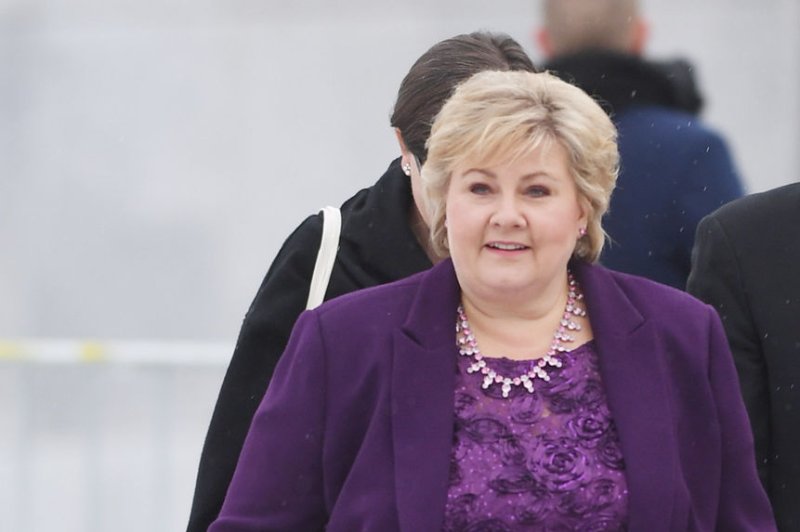In its first decision since Norwegian Prime Minister Erna Solberg secured another term in office, Norway's central bank said expansionary policies are still needed. Photo by Rune Hellestad/UPI |
License Photo
Sept. 21 (UPI) -- For Norway, one of the main suppliers of oil and natural gas in the European economy, there's a need for expansionary monetary policies, its central bank said.
Norge Bank, the country's central bank, said it was leaving its key policy rate unchanged at 0.5 percent. Inflation, meanwhile, should stay below 2.5 percent during the next few years.
"There is a continued need for an expansionary monetary policy," the bank said Thursday.
The bank's decision was the first since Prime Minister Erna Solberg secured another term in office following elections earlier this month. Her Conservative Party lost three seats in the 169-seat Parliament and is expected to sit down to form a new coalition with the majority Labor Party, the Progress Party, which holds 27 seats, and Christian Democrats, which hold 8 seats. Solberg's party holds 45 seats.
The Norwegian Oil and Gas Association said four of the largest parties -- Labor, Conservative, Progress and Center -- are pro-industry and will ensure stability for the energy sector. Spokesman Tommy Hansen said Solberg wasn't expected to make any changes that would impact the oil and gas industry, though she's been a vocal supporter of the need to advance a low-carbon economy.
Apart from Russia, Norway is one of the leading energy suppliers to the European economy, designating nearly all of its offshore production for exports. The National Petroleum Directorate reported preliminary figures for August were lower than expected, though declines were likely the result of seasonal factors. Total discovered and potential resources are up more than 40 percent since 1990. With 50 years behind it, the NPD estimated Norway is not yet at the halfway point as a producer.
The central bank said it was optimistic about the overall energy sector because oil price futures were edging higher in the third quarter, while non-oil business investments were expected to improve.
"Higher imports among trading partners will boost exports from Norway," the report read.















